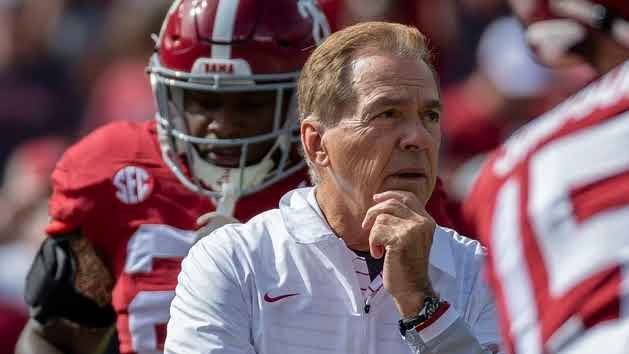
Alabama Crimson Tide is among the schools that do not disclose NIL data.
This year, Saban and Jimbo Fisher of Texas A&M traded barbs over payments to college football players through name, image, and likeness deals. Saban demanded transparency, while Fisher claimed his team was an open book.

“I’ve got nothing to hide. I’ve got nothing to hide. “And our program has nothing to hide,” Fisher stated at a May 19 news conference. “Be interesting if everyone could say that.”
On May 31, Saban advocated for transparency after accusing Texas A&M of having “bought every player” during recruiting. “I’m all for players making as much as they can make,” he was quoted as saying. “I also think we’ve got to have some uniform transparent way to do that.”
ESPN attempted to take up the coaches’ and other universities’ call for more transparency in NIL information by asking a sample of 23 universities, 20 of which were from Power 5 conferences, to release their NIL-related documents or data. Schools generally provided few or no records. In the case of Saban’s Alabama, the university declined to provide any information. And at Fisher A&M? The university promised to provide hundreds of records, but has yet to do so; the records that were released lacked financial terms, athletes’ names, and sports; and while A&M did eventually release a per-sport breakdown, it came months later, after ESPN made a follow-up request.
There are no uniform NIL transparency or deal-disclosure rules, so the only way to get a picture of what’s going on in the marketplace is to piece together incomplete and unverifiable data from public statements from athletes, the companies they endorse, and others. Some of that data, however, focuses on an athlete’s market value rather than what they actually earn. Even NCAA officials, who have occasionally been denied access to school records, told ESPN that they have discovered instances where numbers shared publicly are exaggerated or incorrect.

As a result, it is nearly impossible to identify trends and outliers that may indicate inequities in how schools promote or support their athletes across sports, gender, and race; whether athletes are treated fairly if a school has a competing interest with a company or donor; or whether schools ensure athlete deals follow state and NCAA NIL rules and are not exploitative. Some information — even anonymous, aggregate figures that provide an overview of the market — could assist athletes and recruits in determining whether their own NIL offers are reasonable.

Leave a Reply